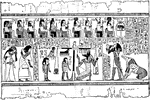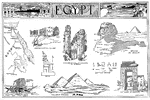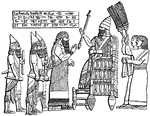Clipart tagged: ‘hieroglyphics’

Seated Egyptian Figure with Hieroglyphics Pictured to the Right
An Egyptian figure wearing a headdress with a snake, is seated on a stool with an ornamental design…
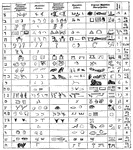
Hieroglyphics vs Ancient Language
A comparative table of hieroglyphics and ancient alphabet characters.
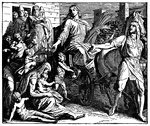
Joseph Collects Wheat as Governor of Egypt in Preparation for the Famine
"48 And he gathered up all the food of the seven years which were in the land of Egypt, and laid up…

Beginning of Written Language
"Below the pictured hieroglyphics in the first line is the same text in a simpler writing known as hieratic.…

Mural Decoration with Heiroglyphics from the Great Temple at Philæ
Another element in Egyptian monuments which is worthy of study is the hieroglyphics, which mean, literally,…
Obelisk
An obelisk is a tall, thin, four-sided, monument with a pyramid top. This particular one is inscribed…
Early Egyptian Pictures
"Early Egyptian Pictures. Ploughing, breaking clods, and sowing."—Gordy, 1912
Plowing and Sowing
A drawing of plowing and sowing in the Pyramid Age of Egypt. The hieroglyphs tell the story of the picture.
Rosetta Stone
"In 1799, the Rosetta Stone was found and gave the first key to the reading of hieroglyphics. On this…
Excerpt from the Rosetta Stone
"In 1799, the Rosetta Stone was found and gave the first key to the reading of hieroglyphics. On this…

Rosetta Stone Sample
"In 1799, the Rosetta Stone was found and gave the first key to the reading of hieroglyphics. On this…
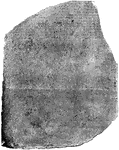
The Rosetta Stone, Front View
A fragment of an Ancient Egyptian text, which provided the key to the modern understanding of Egyptian…

Portion of Rosetta Stone
"In the Nile valley there had been found a few ancient inscriptions, carved upon stone in unknown characters,…

Row 3 of Hieroglyphics
A row of hieroglyphics showing men working. These are to honor Shalmaneser, king of Assyria.
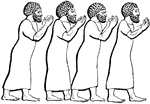
Sennacherib
Figures from the palace of Sennacherib, located in Kouyunjik, Nineveh (ancient Assyria).

Egyptian-Front of Temple of Isis at Philae
This temple is at the southern end of the Great Temple in Philae. The temple was dedicated to the worship…

